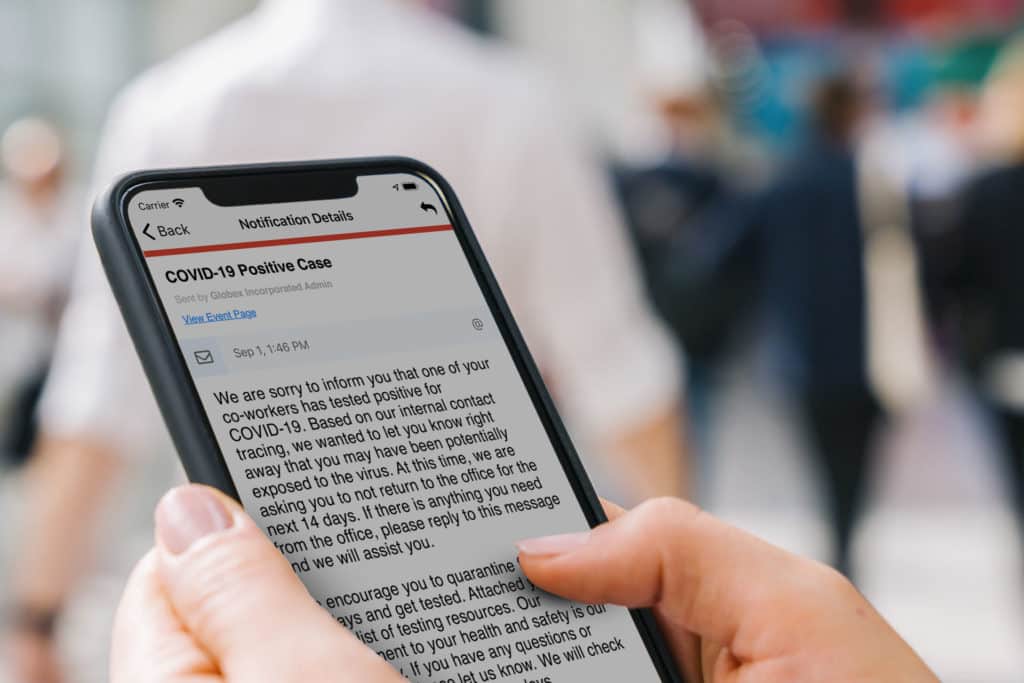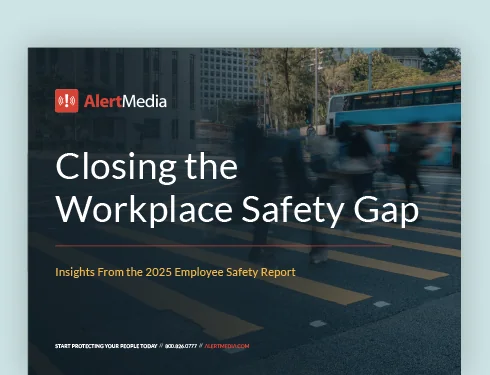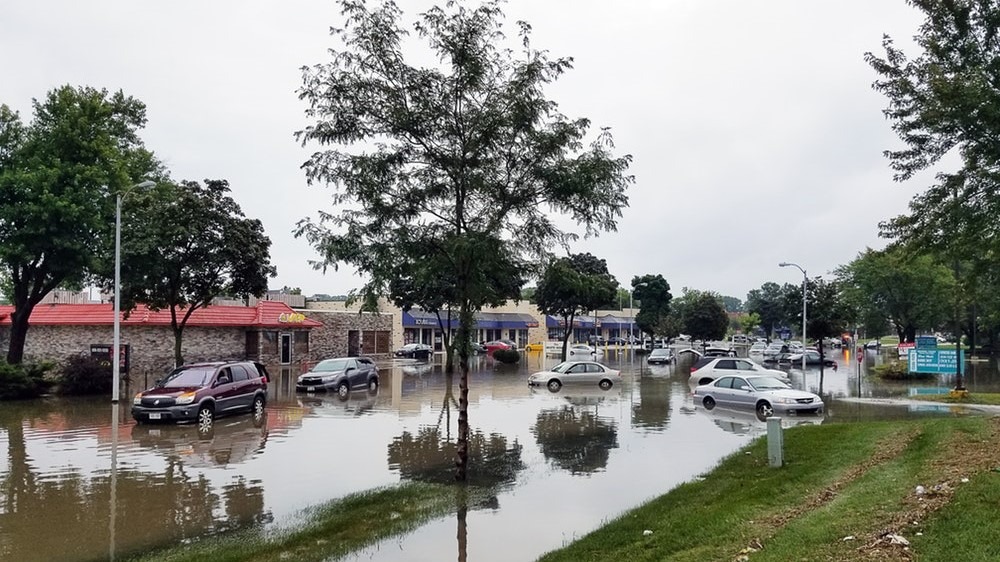
Understanding the Impact of California AB 685 on Emergency Communication
Assembly Bill 685 will take effect beginning January 1, 2021, and impacts the vast majority of the nearly one million businesses currently operating in the state of California.

Organizations and governments around the world continue to wrestle with the uncertainty and challenges created by the coronavirus pandemic. One such challenge is determining how and when organizations should communicate with employees when colleagues, or other individuals in the workplace, become ill or learn they have tested positive for COVID-19.
As a result, federal and state officials are actively working to clarify when and how employers must notify employees when there is a known exposure risk to both reduce confusion and establish workplace safety protocols consistent with the OSHA guidelines. As one example, the California state legislature recently passed new legislation establishing a statewide standard for how employers must handle workplace incidents involving employees with confirmed COVID-19 cases.
Previously, the state of Virginia also introduced new mandatory workplace safety rules in response to concerns about the spread of COVID-19, including a requirement to immediately notify employees who may have been exposed to the virus.
Given the likelihood the recent California law serves as a blueprint for other state legislators attempting to create similar guidelines for employers, it warrants a closer look. Here’s what you need to know.
What is California Assembly Bill 685?
Signed into law by California Governor Gavin Newsom on September 17, 2020, Assembly Bill (AB) 685 is new legislation that establishes statewide occupational safety standards, specifically how employers handle COVID-19-related communication to employees. Additionally, the bill provides the California Division of Occupational Safety and Health (Cal/OSHA) expanded authority to enforce the new requirements, including civil penalties for non-compliance. The bill formalizes previously published Cal/OSHA guidelines for protecting workers from COVID-19 which carried no legal obligation.
Commenting on the law passing, Assemblymember and bill author Eloise Gómez Reyes stated, “By notifying the public and workers of potential exposures as required under AB 685 we allow workers to take appropriate steps to protect themselves and their loved ones while also bolstering the response of public health officials.”
AB 685 will be in effect beginning January 1, 2021, and impacts the vast majority of the nearly one million businesses currently operating in California.
5 Employer Communication Requirements Established by AB 685
To ensure at-risk employees are aware of potential exposure to COVID-19 as quickly as possible, AB 685 prescribes several communication requirements employers must follow upon learning of any potential exposure in the workplace. Most importantly, each of these actions must take place within one business day of the notice of potential exposure.
Here are the specific notice requirements established by the legislation.
1. Provide Written Notice to All Impacted Employees
As perhaps its most important and ambitious requirement, AB 685 specifies that employers immediately provide written notice to all employees, as well as employers of subcontracted employees, who were physically present at the worksite within the specified “infectious period.”
The written notice must adhere to the following requirements:
- Shared in a manner consistent with other critical employment-related information
- Shared via communication channels reasonably anticipated to be received within one business day
- Shared in both English and the language understood by the majority of the employees
2. Communicate COVID-19 Benefits Information
The bill also requires that employers provide impacted employees with any relevant information regarding COVID-19-related benefits they are entitled to under applicable federal, state, or local laws. These include workers’ compensation and other forms of work relief such as leave specific to COVID-19, state-mandated leave, and sick leave. Additionally, the bill specifies employers should share information about anti-retaliation and anti-discrimination protections of the employee.
3. Communicate Disinfection Protocols and Safety Plans
After an incident is reported, employers must also update all employees—as well as subcontracted employees via their respective employers—concerning disinfection and safety plans that will be implemented. These plans must be consistent with current guidance for cleaning and disinfecting from the federal Centers for Disease Control (CDC).
4. Notify Local Authorities Concerning Outbreaks
If an employer is notified that the number of cases at a given worksite meets the definition of a COVID-19 outbreak—currently defined by the California Department of Public Health as three or more cases in a 14-day period—a representative of the company must, within 48 hours, notify the local public health agency with jurisdiction (based on the location of the worksite). Additionally, the employer must continue to notify the local health department of any subsequently confirmed cases.
5. Maintain Employee Communication Records
Finally, California AB 685 specifies that employers must maintain accurate records of all written notifications regarding incidents for at least three years. This information should be stored securely and confidentially, consistent with other confidential employee medical information.
AB 685 Frequently Asked Questions
Given the relatively short period of time to prepare for AB 685 before the legislation goes into effect, many businesses are racing to formalize employee communication plans, including reassessing emergency communication systems to ensure they are able to comply with the new requirements.
Here are some of the most common questions thus far. We’ll continue to update this list and publish more guidance as information is available.
Does AB 685 only apply to specific employers or industries?
AB 685 mandates all public and private employers to notify employees who may have been exposed to a “qualifying individual” known to have COVID-19. Health facilities and employees who, as part of their job duties, regularly conduct COVID-19 testing, screen, or provide care to individuals who have tested positive for COVID-19 are exempt.
How does AB 685 define a qualifying individual?
The bill defined a “qualifying individual” as any person that has one or more of the following:
- A laboratory-confirmed case of COVID-19, as defined by the California State Department of Health
- A positive COVID-19 diagnosis from a licensed health care provider
- A COVID-19-related order to isolate provided by a public health official
- Died due to COVID-19, in the determination of a county public health department
How does AB 685 define a worksite?
For the purposes of the bill, a worksite is defined as “any building, store, facility, agricultural field, or other location where a worker worked during the infectious period.” The bill also specifies that it does not apply to buildings or floors of buildings, owned or leased by the employer that a qualifying individual did not enter
How long is the infectious period as defined by AB 685?
The California Department of Public Health defines the “infectious period” as a period of 14 days, including a minimum of 48 hours prior to when the individual first developed symptoms.
What qualifies as notice of potential exposure?
There are multiple ways that an employer can be notified of potential exposure at a worksite. According to the bill, an employer is considered to have been notified if any of the following occur:
- It receives notification directly from a public health official or licensed medical provider that an employee was exposed to a qualifying individual at the worksite
- It receives notification from an employee, or their emergency contact, that the employee is a qualifying individual.
- It receives notification via the employer’s testing protocol that an employee is a qualifying individual.
- It receives notification from a subcontractor or their employer that a qualifying individual was on the worksite.
How will AB 685 be enforced and how is it different than prior enforcement?
In addition to establishing statewide standards for employee communication for confirmed COVID-19 cases, AB 685 grants Cal/OSHA expanded authority to enforce safety violations through both citations and worksite shutdowns. Additionally, the bill specifies a new, accelerated timeline for handling COVID-19-related Serious Violations which will forgo the typical 15-day rebuttal period provided to employers for non-COVID-19 cases.
Michelle S. Strowhiro, a partner at McDermott Will & Emery, further explained the change in a recent article for the National Law Review.
“In non-COVID-19 cases, if Cal/OSHA establishes a presumption of a Serious Violation, the employer has 15 days prior to Cal/OSHA issuing a Serious Violation to rebut the citation. During that time the employer may rebut the presumption with evidence and establish that a violation is not serious by demonstrating that the employer did not know and could not, with the exercise of reasonable diligence, have known of the presence of the violation.
“AB 685 accelerates Cal/OSHA’s citation process and allows the agency to issue a citation alleging a Serious Violation immediately, without soliciting rebuttal information from the employer or notifying the employer 15 days in advance.”
What are the penalties for non-compliance with AB 685?
Per the California Code of Regulations, any employer who violates any occupational safety and health standard determined to be a serious violation can be assessed a civil penalty of up to $25,000 for each violation.
How AlertMedia Helps Organizations Meet AB 685 Requirements
Whether you already have an internal communication plan in place or are actively exploring one, a robust emergency communication system can help any organization meet regulatory requirements established by AB 685 and other forthcoming legislation related to workplace safety.
Below are just a few of the ways that AlertMedia can help you communicate with confidence, keep employees informed, and avoid unnecessary penalties.
Standardized COVID-19 Notifications
AB 685 requires that employers immediately provide written notice to impacted employees and subcontractors within one business day after receiving notification of a COVID-19 case as a worksite. Because of this, employers need to be able to pinpoint which employees were impacted based on the location and timing of the event, then get information out quickly via appropriate communication channels so that employees receive it.
AlertMedia can help you:
- Automate recurring syncs with your HRIS to ensure everyone receives the message.
- Streamline daily wellness checks using survey notifications and automate responses.
- Send notifications via multiple channels like text, email, voice, and app notification to ensure visibility.
- Use templates to save time and ensure all required information is communicated.
- Confirm receipt with performance dashboards and read confirmation notifications.
- Quickly escalate confirmed or suspected cases to designated response team groups.
Share Relevant COVID-19 Benefits and Information
In addition to making employees aware when potential exposure occurs, AB 685 specifies that employers must share all relevant COVID-19 benefits and information about workplace disinfection and safety plans, including providing updates as plans are executed. To ensure this information is both accessible and current, employers need the ability to easily update and share information on an ongoing basis without inundating the entire workforce.
AlertMedia can help you:
- Provide required information and funnel all questions to a dedicated event page.
- Link all notifications to the event page with relevant COVID-19 information.
- Include links or attachments to policy documents in email notifications.
- Segment your audience and send notifications to only those who were potentially exposed.
Create and Securely Store Records Related to COVID-19 Communications
Per records keeping requirements specified in California AB 685, employers must maintain accurate records of employee notifications related to COVID-19 cases for at least three years. Organizations that don’t already have a dedicated system for emergency communication will need to evaluate their current processes for recordkeeping and reporting to determine if they meet the new requirements.
AlertMedia can help you:
- Easily manage notifications, responses, and incoming messages from one global dashboard to simplify reporting and documentation on all related communication.
- See real-time message performance and pull detailed reporting on all notification activity for documentation requirements.
- Generate notification reports as HTML, PDF, or XLS files or get access to all data via API for custom reporting needs.

![11 Steps to Creating an Effective Emergency Response Plan [+ Template]](https://www.alertmedia.com/wp-content/uploads/2023/10/Blog-Emergency-Response-Plan.webp)


